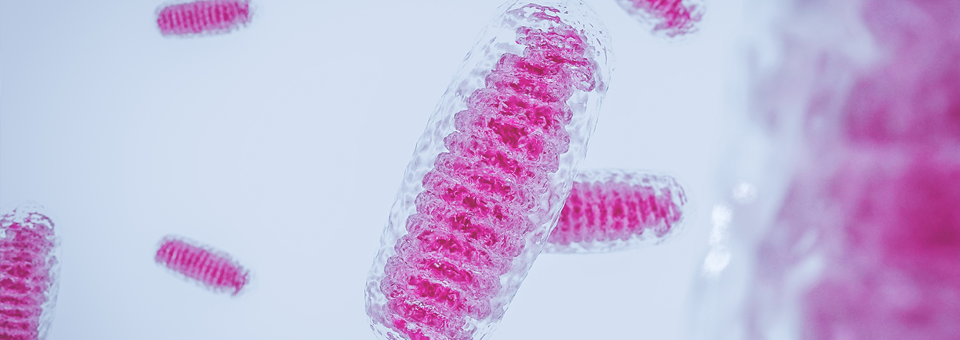
Not many 95-year-olds are still out running, yet Olga Kotelko was shattering world records in sprinting and jumping.
This track and field legend sprinted, jumped and threw the javelin. And, by the time Olga Kotelko finally stopped competing — at age 95 — she’d won more than 750 gold medals and had shattered more than 30 world records, including 17 in the 90 to 95 age group.
Researchers from around the world are fascinated by Olga. They want to know what gave this “Incredible Flying Nonagenarian” the energy, strength and stamina to keep winning.
As it turns out the secret is Olga’s flawless mitochondria…
Mitochondria plays an important role in staving off the diseases of aging. Unfortunately, modern science has lagged way behind and is just beginning to understand this.
As a regular reader, you know that your mitochondria are the tiny power plants that act like a battery in your body. They provide the energy your cells need to function.
The problem is that as you age, your mitochondria start to die off — and those that remain become weaker. Not only do you lose the stamina and vitality you had when you were young, you also become susceptible to the long list of chronic diseases we associate with aging.
That’s because your mitochondria control your body’s master energy system, powering every function and organ in your body.
Research shows that damaged mitochondria can lead to:
- Stroke
- Diabetes
- Heart disease
- Chronic fatigue syndrome
- Parkinson’s, Alzheimer’s and ALS
- Multiple organ failure
The Mitochondria Research Society reports that 50 million U.S. adults are suffering from health problems in which mitochondrial dysfunction is directly involved.1
To keep your cellular power plants operating at full function, I recommend that my patients supercharge their mitochondria with CoQ10. I call it the “jet fuel” that powers your cells’ battery packs. CoQ10 sparks your aging mitochondria to make more energy. It also acts as a potent free-radical scavenger. It soaks up oxidized molecules before they can cause damage.
When cells run out of CoQ10, mitochondria can’t produce enough energy to meet your body’s demands.
And when stockpiles run low, mitochondria are less efficient and they may produce a much less powerful fuel.
Over time, running your body on this cheap fuel takes its toll, damaging the mitochondria and contributing to fatigue, weakness and eventually, disease.
The only good food source for CoQ10 is the organs of free-range cattle and wild game. But we don’t eat them anymore. The closest thing you’ll find is grass-fed meat. It has much more CoQ10 than grain-fed meat does. But you’ll never get enough through food alone.
That’s why I recommend you take at least 50 mg of the ubiquinol form of CoQ10 daily. Ubiquinol is the form that already has the electrons your body uses for energy. And it’s eight times more powerful than the old form, ubiquinone.
Unfortunately, CoQ10 isn’t enough… Especially as we age.
That’s because as we age, our mitochondria begin to malfunction and die off. So the key to staying young and healthy is making MORE mitochondria that are healthy enough to produce energy.
And that requires PQQ.
PQQ is a coenzyme like CoQ10. It acts like the spark plug inside your cells to make new mitochondria. Then CoQ10 helps each individual mitochondrion make more energy.
Researchers at the University of California at Davis fed mice a diet supplemented with PQQ, and they grew a staggering number of new mitochondria in just eight weeks.2
PQQ is also a potent antioxidant that neutralizes dangerous free radicals. In other animal studies, PQQ helped heart muscle cells heal damage from oxidative stress.3
Turbocharge Your Energy Cells in THREE Easy Steps
This amazing nutrient can triple your energy in only a few days. Here’s how to get what you need:
- Get a little from food. Your body can’t produce PQQ. But you can get some from foods like kiwi, green peppers, carrots and cabbage. Each serving has 2 mcg to 3 mcg. One cup of green tea has twice that amount.
- Then supplement. But it’s still not enough, so I recommend supplementing. Studies using 10 mg to 20 mg a day of PQQ provide the best results. Most supplements sold have just a tiny fraction of that amount. So check the label carefully. Take your PQQ first thing in the morning for best results. And don’t forget to take your PQQ with CoQ10 — not in place of it. CoQ10 is still critical. It helps all your mitochondria — the new and the old — pump out more energy.
- Finally, pump up your mitochondria with PACE. A brand-new study found that just two minutes of intense exercise — like the sprints that Olga did — turbocharged a person’s existing mitochondria — and generated healthy NEW mitochondria cells.4
PACE stands for Progressively Accelerating Cardiopulmonary Exertion. It’s a short, intense workout you do in just 12 minutes. And it’s safe for any age group. It doesn’t matter if you’re out of shape right now. You can start out easy, at your own level. Gradually, you increase your intensity as each move becomes easier and easier for you.
Click the link to find the perfect PACE workout: www.youtube.com/user/AlSearsMD/videos. I have more than 30 different exercises and a complete workout to help you get started.
To Your Good Health,
![]()
Al Sears, MD, CNS
1. Omics International. Mitochondrial Research Society. [https://www.omicsonline.org/societies/mitochondria-research-society] Accessed June 14, 2019.
2. Stites T, et al. “Pyrroloquinoline quinone modulates mitochondrial quantity and function in mice.” J. Nutr. 2006;136(2):390-396.
3. Sahin E, et al. “Telomere dysfunction induces metabolic and mitochondrial compromise.” Nature. 2011;470(7334):359-365.
4. Trewin AJ, et al. “Acute HIIE elicits similar changes in human skeletal muscle mitochondrial H2O2 release, respiration, and cell signaling as endurance exercise even with less work.” Am J Physiol Regul Integr Comp Physiol. 2018;315(5):R1003-R1016.








